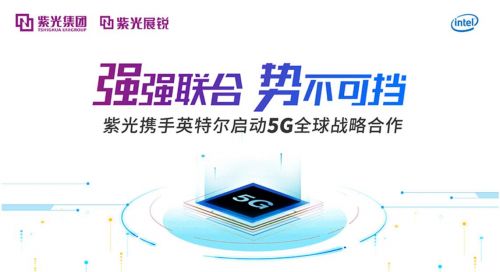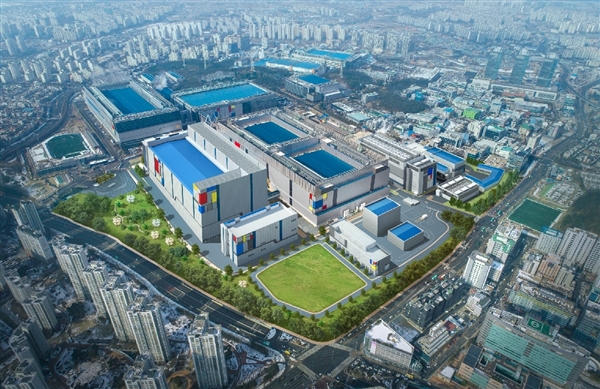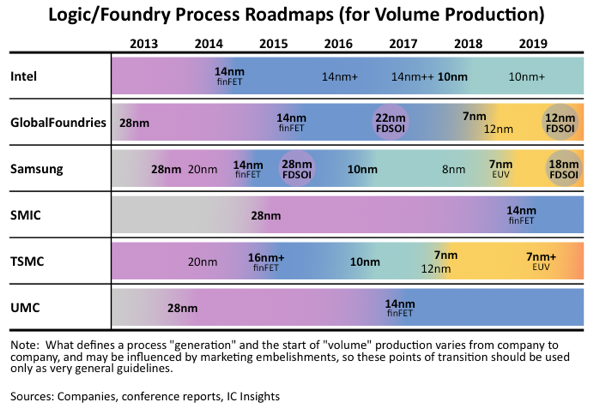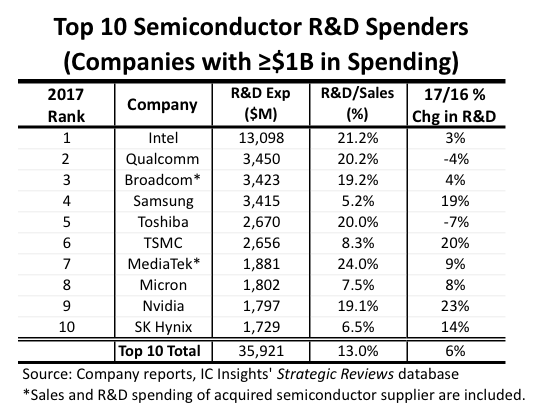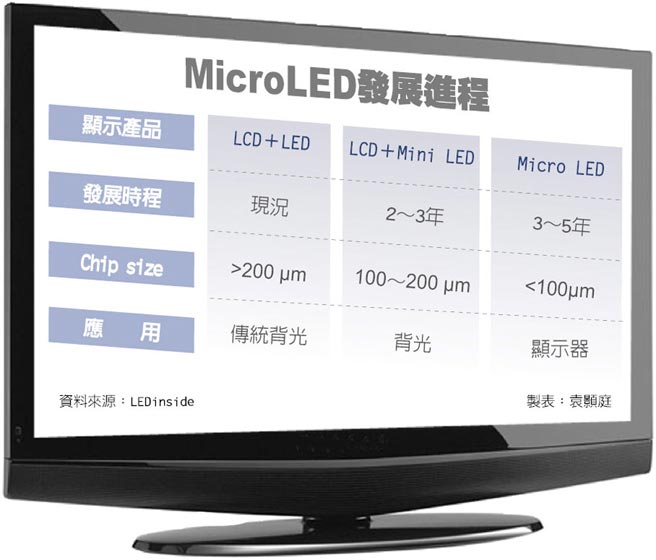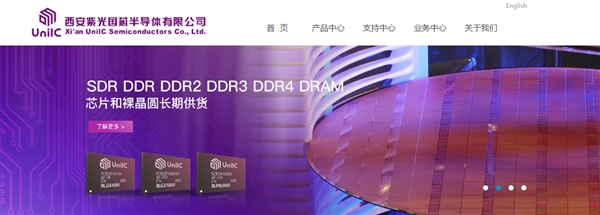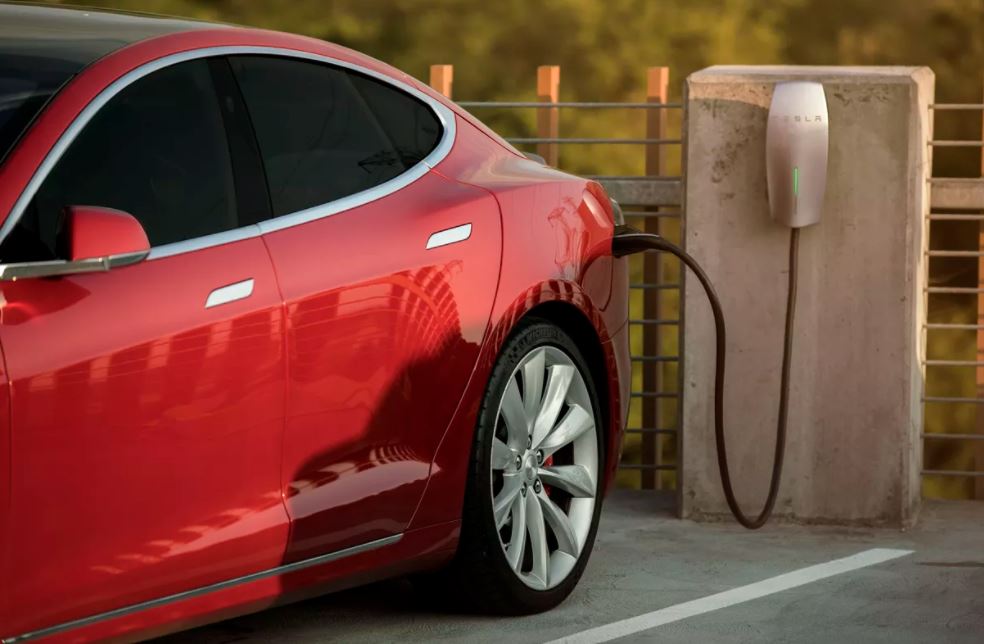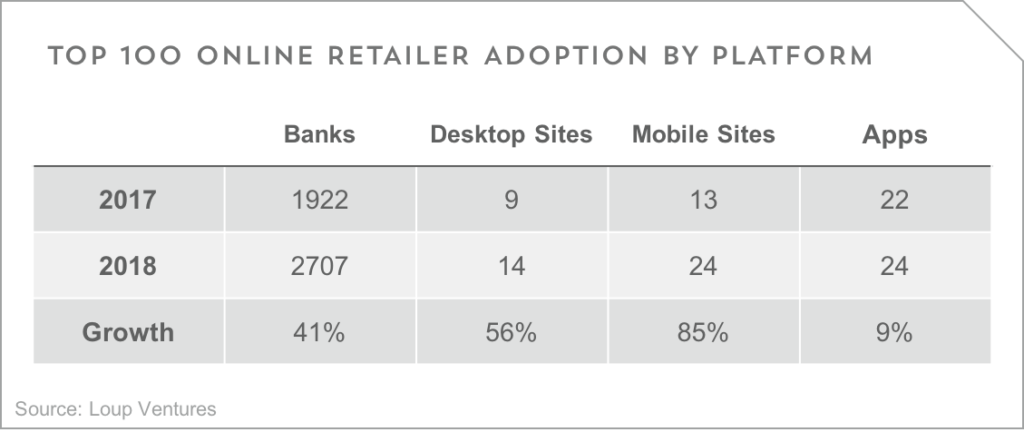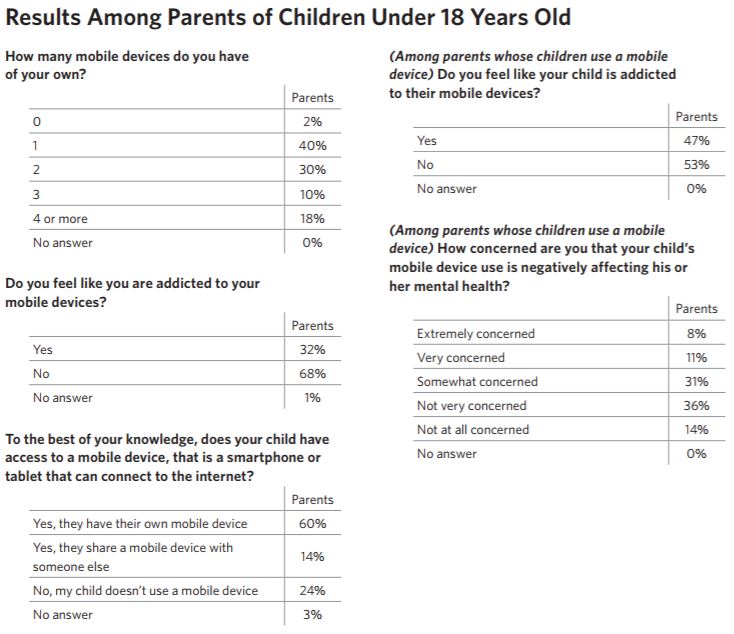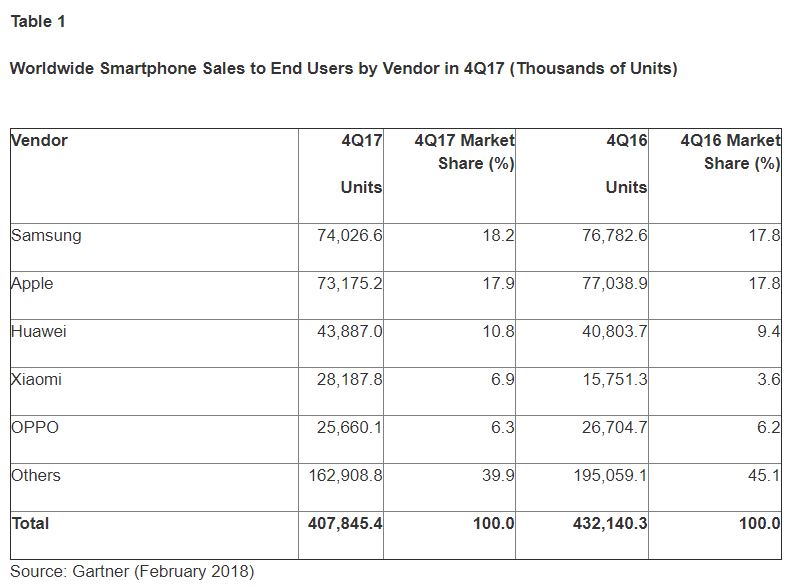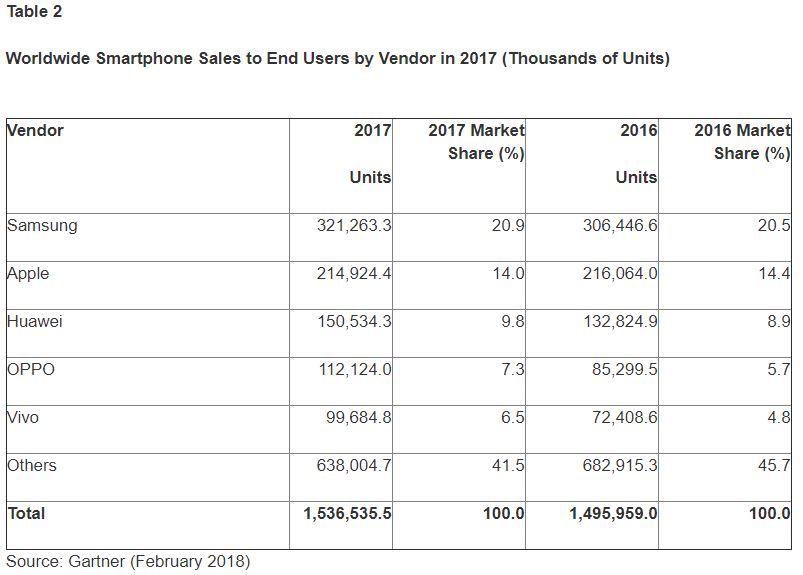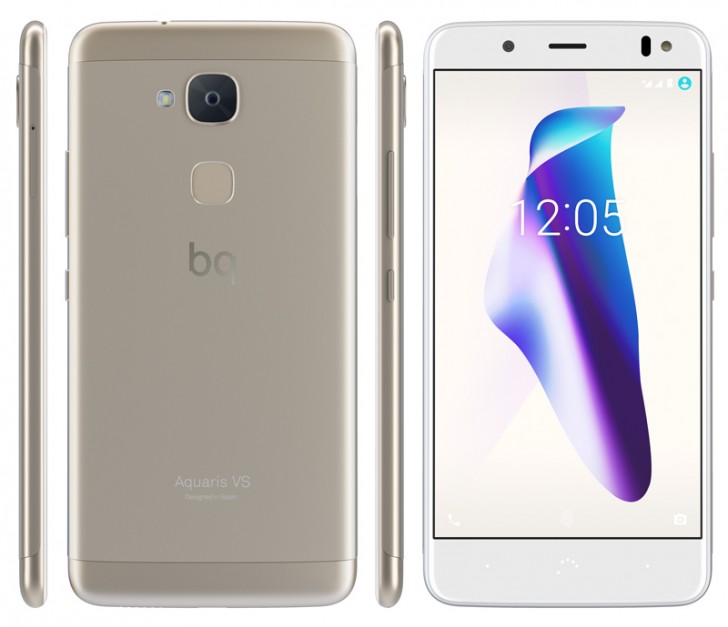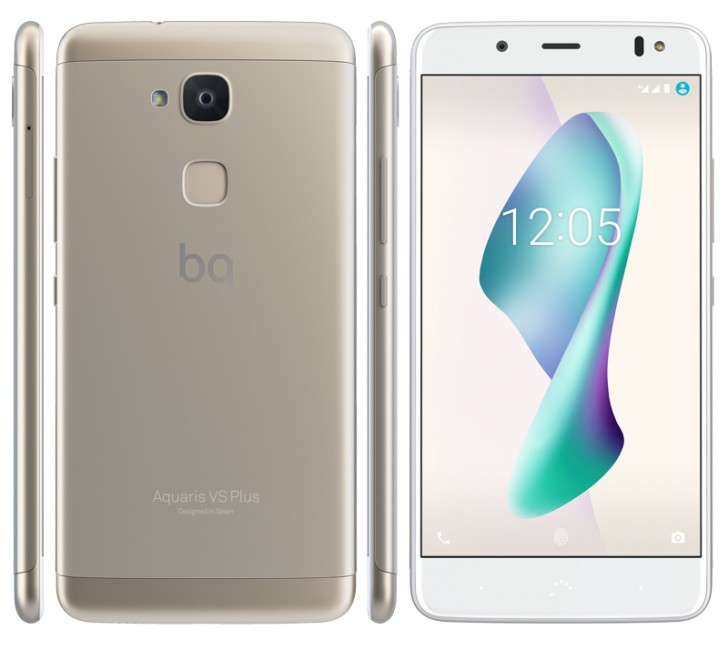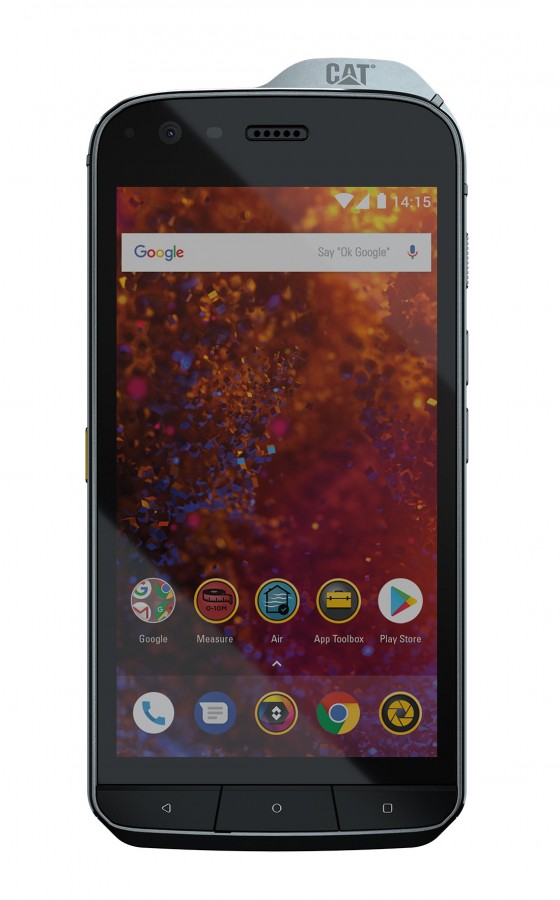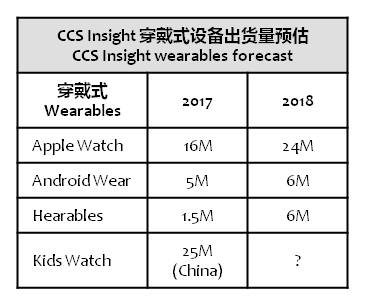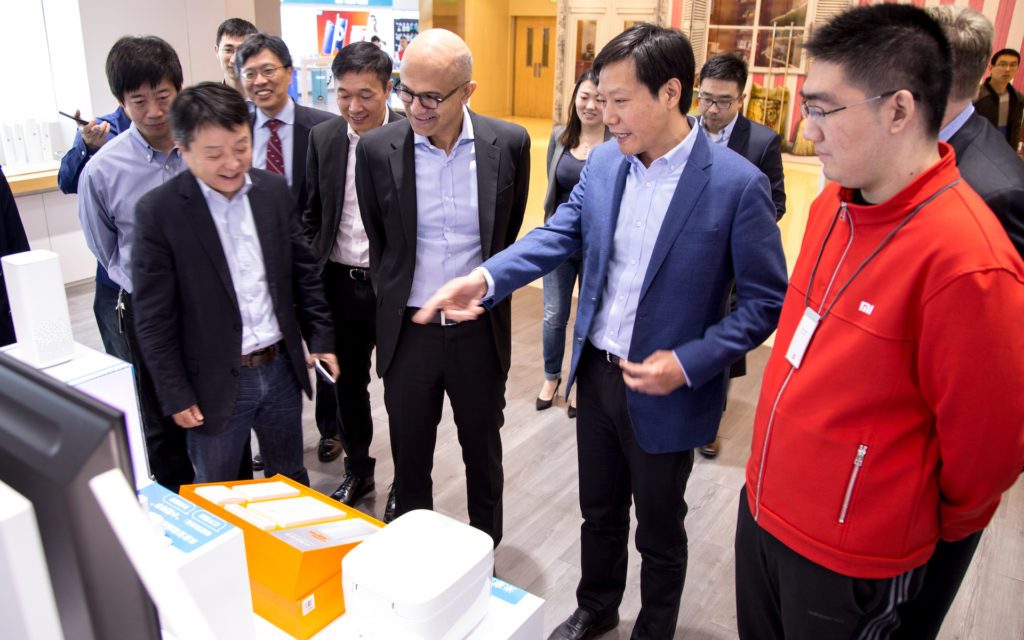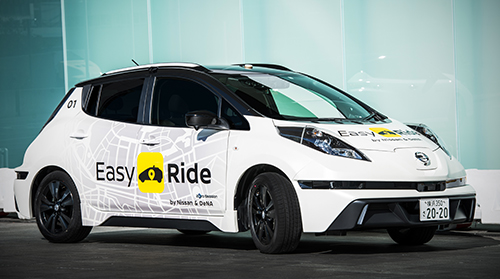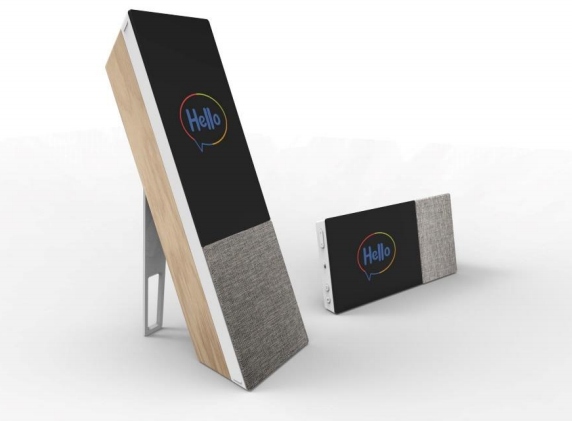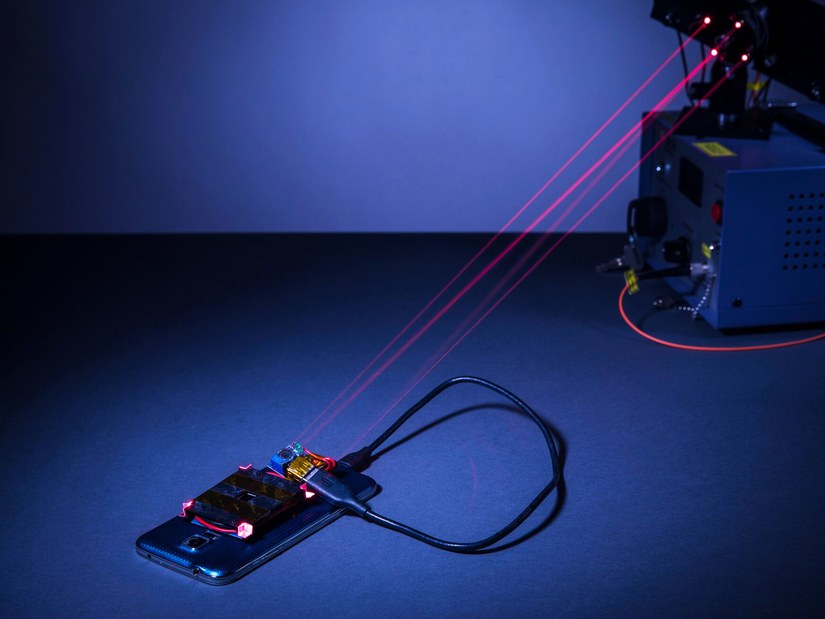
02-24: Tsinghua Unigroup wireless subsidiaries, Spreadtrum & RDA, have announced a strategic collaboration on 5G with Intel; Intel has announced partnerships with HP, Dell, Microsoft, and Lenovo to launch 5G-capable Windows PCs powered by its XMM 8000-series 5G modems; etc.
Chipsets
Intel has announced partnerships with HP, Dell, Microsoft, and Lenovo to launch 5G-capable Windows PCs powered by its XMM 8000-series 5G modems. The 5G Windows PCs should become available sometime in 2H19, according to Intel. (Engadget, Android Headlines, The Verge, First Post, Engadget)
Tsinghua Unigroup wireless subsidiaries, Spreadtrum & RDA, have announced a strategic collaboration on 5G with Intel. The companies plan to develop a 5G smartphone platform for the China market that will feature an Intel 5G modem and will be targeted to coincide with 5G network deployments in 2019. (Sina, Asia Nikkei, Electronics Weekly, CN Beta)
Samsung Electronics is set to break ground in Feb 2018 for a new foundry plant equipped with cutting-edge process technologies in Hwaseong, Gyeonggi Province. The plant will be filled with Extreme Ultraviolet lithography equipment from the Netherlands. With the EUV equipment, Samsung aims to start mass producing chips on 7nm process in 2019 at the earliest. (The Investor, WCCF Tech, ZDNet, Korea Herald, The Cover, EET China)
According to SEMI Silicon Manufacturers Group (SMG), silicon wafer area shipments in 2017 totaled 11,810 million square inches (MSI), up from the previous market high of 10,738MSI shipped during 2016. Revenues totaled USD8.71B, 21% higher from the USD7.21B posted in 2016. (Electronics Weekly, Laoyaoba, SEMI, press)
MediaTek’s 12nm Helio P40 series mobile chips have reportedly been adopted by OPPO and vivo for their upcoming smartphone models. MediaTek will likely improve its gross margin to more than 38% in 2018, when revenues are forecast to increase 6%~10%. (TechNews, China Times, Digitimes, press)
MediaTek has announced that it has joined the Open Neural Network Exchange (ONNX) to drive AI innovation and support the evolution of its edge AI platform. ONNX was created and launched by Amazon, Facebook and Microsoft to establish an interoperability standard for transferring deep learning models between frameworks. (Laoyaoba, Bnext, UDN, TechNews, CISION, Taipei Times)
For logic-oriented processes, companies are fabricating leading-edge devices such as high-performance microprocessors, low-power application processors, and other advanced logic devices using the 14nm and 10nm generations. There is more variety than ever among the processes companies offer, making it challenging to compare them in a fair and useful way. Moreover, “plus” or derivative versions of each process generation and half steps between major nodes have become regular occurrences. (IC Insights, press)
The 10 largest semiconductor R&D spenders increased their collective expenditures to USD35.9B in 2017, an increase of 6% compared to USD34.0B in 2016, according to IC Insights. Intel continued to far exceed all other semiconductor companies with R&D spending that reached USD13.1B, said IC Insights. (IC Insights, press, Digitimes, Sohu)
Touch Display
AUO aims to use Mini LED for its high-end and professional application market. Currently, the company has already collaborated with gaming notebooks, art-specific display vendors to develop products, and plan to ship in 2H18. (Laoyaoba, China Times)
According to LEDinside, the Micro LED market value in 2025 is expected to reach USD2.891B. Due to Micro LED’s good performance, it can be applied in the fields such as wearable watch device, cellphone, automotive display, AR/VR, digital display and TV. However, owing to tough technique and high cost, it is more suitable to be applied in high-level TV, digital display and automotive display. The Micro LED market value in large-size display in 2025 is expected to reach USD1.98B, which takes up 68% of the entire application. (Laoyaoba, LEDInside)
Camera
Calin Technology focus on automotive and surveillance camera segment, expects its shipment of automotive camera lens to grow 50% in 2018 compared to 2017, with 3M units. (UDN, Laoyaoba, China Times)
Storage
The DDR4 memory module from subsidy of Tsinghua Unigroup, Xi’an UnilC Semiconductors, has reportedly entered mass production, and could supply for long-term demand. Tsinghua’s DDR4 memory is using DIMM (U-DIMM) and SO-DIMM development. (Laoyaoba, Sina, China.com)
Sensory
LED vendor Epistar has been aggressively developing non-LED segment. As Epistar’s MOCVD technology is strong, IQE and Lumentum have allegedly approached Epistar, yet Epistar did not comment on the rumor. (Laoyaoba, UDN, UDN)
Apple iPhone X first introduced face recognition in 2017, leading 3D sensing wave, 2018 iPhone will continue to adopt 3D face recognition, major smartphone brands will follow the trend, driving the growth of 3D sensing applications related industries. The upstream Gallium Arsenide (GaAs) vendors including Visual Photonics Epitaxy (VPEC), Win Semiconductor and Advanced Wireless Semiconductor (AWSC) are reportedly interested in expanding capital expenditures to fully expand the production of 3D sensing devices needed epitaxial, VCSEL (vertical cavity surface emitting laser). (UDN, Laoyaoba, Asia Nikkei)
Battery
Tesla expects to sell 100,000 electric vehicles in 2018. Tesla is introducing the Workplace Charging program. It will allow offices and business to apply for a Wall Connector to be installed in the company garage or parking lot. The Wall Connector and installation will be free to the property managers. (TechCrunch, The Verge, Ars Technica, Tesla, Sohu)
University of Washington has used lasers to charge a smartphone battery wirelessly with a combination of lasers and a power cell that is mounted to the back of a smartphone. The charging method is safe thanks to a inclusion of four guard sensors that will shut off the laser beams if the area in front of them is blocked or impeded. (Android Headlines, Wired, Daily Mail, Univ. of Washington, People.com)
Connectivity
Bharti Airtel and Huawei have successfully conducted India’s first 5G network trial under a test setup at the former’s network experience centre in Manesar, Gurgaon. India plans to roll out 5G services for consumers by 2020 and to achieve that objective, the government had in Sept 2018 set up a high-level forum that will evaluate and approve roadmaps and action plans to bring in the latest technology in the country. (VentureBeat, Economic Times)
A subsidiary of Quanta, a maker of personal computers and cloud servers, announced that it will launch a cloud solution built specifically for Communication Service Providers (CoSP) for the next big 5G market. (Laoyaoba, UDN, CNYES, TechNews, Investor, Business Wire)
Phones
Google has been partnering with the mobile industry to improve the messaging experience on Android with RCS (Rich Communication Services), bringing more enhanced features to the standard messaging experience on mobile devices. Google is working with 43 carriers and device manufacturers to bring better native messaging to every Android user. (GSM Arena, Google, Android Headlines, ZOL, Sina)
Google is bringing its augmented reality system ARCore out of beta with new features, and it is making its Lens visual search tool part of Google Photos on all phones. ARCore 1.0 launches on all Google Pixel, all recent Samsung flagship phones, the Android O version of LG’s V30 and V30 Plus, the Asus ZenFone AR, and OnePlus 5. (The Verge, Pocket-Lint, Engadget, Google, 163, iFeng)
Loop Ventures has completed annual Apple Pay review and found year over year growth has been impressive with active users more than doubling, transactions more than tripling and online merchant adoption increasing by ~50%. Loop Ventures believes only 16% of global iPhone users have turned on Apple Pay. (Loop Ventures, press, Apple Insider, 163, Tencent)
According to an online survey of 4,201 U.S. parents that was conducted at the end of last month by Survey Monkey, 47% of those responding said that they feel their child is addicted to mobile devices. Since there were only two options given to those taking the survey, 53% said that their child is not hooked on handsets. (Phone Arena, Common Sense, ZOL)
Global sales of smartphones to end users totaled nearly 408M units in 4Q17, a 5.6% decline over the fourth quarter of 2016, according to Gartner. This is the first year-on-year decline since Gartner started tracking the global smartphone market in 2004. Samsung saw a year-on-year unit decline of 3.6% in 4Q17, but this did not prevent it from defending its No. 1 global smartphone vendor position against Apple. (GSM Arena, Gartner, press, Android Authority, 163, iFeng, China.com)
BQ Aquaris VS and VS Plus are announced – 5.2” HD IPS LCD / 5.5” FHD IPS LCD, Qualcomm Snapdragon 430, rear 12MP + front 8MP, 3GB + 32GB / 4GB + 64GB, Android 7.1, rear fingerprint scanner, 3100mAh / 3400mAh. (Gizmo China, GSM Arena, BQ)
CAT S61 is announced – 5.2” FHD, Qualcomm Snapdragon 630, rear 16MP + front 8MP, 4GB + 64GB, 4500mAh, IP68 rated, EUR900 / GBP800. (GSM Arena, Biz Journals)
Wearables
Worldwide wearables sales are expected to grow an average of 20% each year over the next 5 years, becoming a USD29B market by 2022, according to CCS Insight. (CCS Insight, Laoyaoba)
Internet of Things
Xiaomi and Microsoft have signed a Strategic Framework Memorandum of Understanding (MoU) to further deepen the partnership between the two companies. Microsoft’s globally leading technologies in cloud computing and AI will help in strengthening Xiaomi’s leadership in mobile, smart devices and services, and contribute to the acceleration of its international expansion. (Ubergizmo, Mi, iFeng, MNW)
Nissan Motor and DeNA will begin a field test of Easy Ride, the robo-vehicle mobility service being developed by both companies on 5 Mar 2018. Easy Ride is envisioned as a mobility service for anyone who wants to travel freely to their destination of choice in a robo-vehicle. (Engadget, TechCrunch, Nissan, CS.com, Sohu)
ARCHOS Hello is launched with 7” / 8.4” FHD, 5MP, 2GB + 16GB, Android O, 4000mAh, EUR130 / EUR180. (Liliputing, GizChina, My Digit)
Samsung Electronics is expected to start from industrial robots and gradually expand into robots for home use. Samsung Electronics completed the development of “Saram” (person in Korean) and the registration of trademark Saram, an industrial AI robot arm at the end of 2017. (Business Korea, Laoyaoba)
